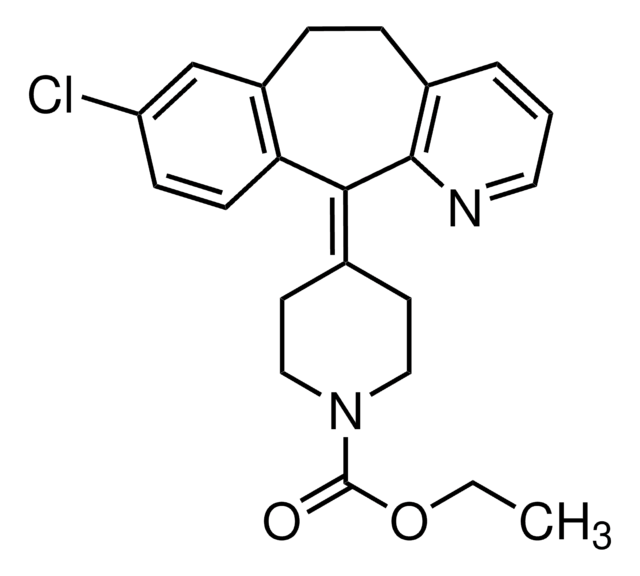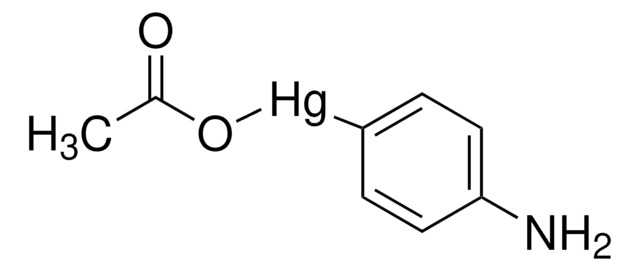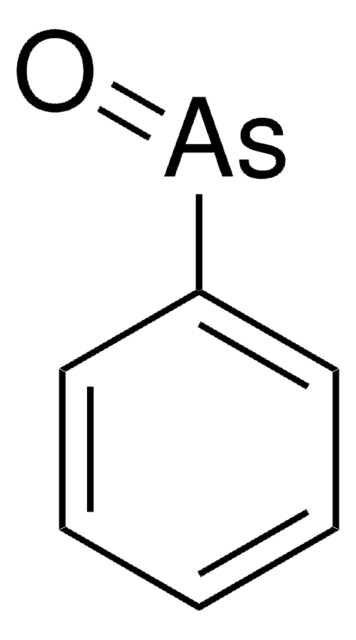N7009
2-Nitro-5-thiocyanatobenzoic acid
≥98% (HPLC)
Synonym(s):
2-Nitro-5-thiocyanobenzoic acid, NTCB
About This Item
Recommended Products
Product Name
2-Nitro-5-thiocyanatobenzoic acid, powder
Assay
≥98% (HPLC)
Quality Level
form
powder
color
yellow
mp
156-157 °C (lit.)
storage temp.
2-8°C
SMILES string
OC(=O)c1cc(SC#N)ccc1[N+]([O-])=O
InChI
1S/C8H4N2O4S/c9-4-15-5-1-2-7(10(13)14)6(3-5)8(11)12/h1-3H,(H,11,12)
InChI key
NQUNIMFHIWQQGJ-UHFFFAOYSA-N
Looking for similar products? Visit Product Comparison Guide
Application
- Site-Specific Conversion of Cysteine in a Protein to Dehydroalanine Using 2-Nitro-5-thiocyanatobenzoic Acid: This research demonstrates the use of 2-Nitro-5-thiocyanatobenzoic acid in protein engineering to modify cysteine residues, which is critical for developing therapeutic proteins and understanding protein structure-function relationships (Qiao et al., 2021).
- Scrapie prion protein structural constraints obtained by limited proteolysis and mass spectrometry: Highlights the utility of 2-Nitro-5-thiocyanatobenzoic acid in the study of prion proteins, providing insights into protein misfolding diseases which can lead to novel therapeutic approaches (Sajnani et al., 2008).
- Localization of a substrate binding domain of the human reduced folate carrier to transmembrane domain 11 by radioaffinity labeling and cysteine-substituted accessibility methods: Utilizes 2-Nitro-5-thiocyanatobenzoic acid in biochemical assays to understand transporter proteins, essential for drug delivery and targeting (Hou et al., 2005).
- A novel procedure for the preparation of biologically active recombinant peptides using a cyanylation reaction: Describes a method using 2-Nitro-5-thiocyanatobenzoic acid for peptide synthesis, beneficial for the development of peptide-based pharmaceuticals (Koyama et al., 1994).
Biochem/physiol Actions
Packaging
Signal Word
Warning
Hazard Statements
Precautionary Statements
Hazard Classifications
Eye Irrit. 2 - Skin Irrit. 2 - STOT SE 3
Target Organs
Respiratory system
Storage Class Code
11 - Combustible Solids
WGK
WGK 3
Flash Point(F)
Not applicable
Flash Point(C)
Not applicable
Personal Protective Equipment
Choose from one of the most recent versions:
Already Own This Product?
Find documentation for the products that you have recently purchased in the Document Library.
Customers Also Viewed
Our team of scientists has experience in all areas of research including Life Science, Material Science, Chemical Synthesis, Chromatography, Analytical and many others.
Contact Technical Service










